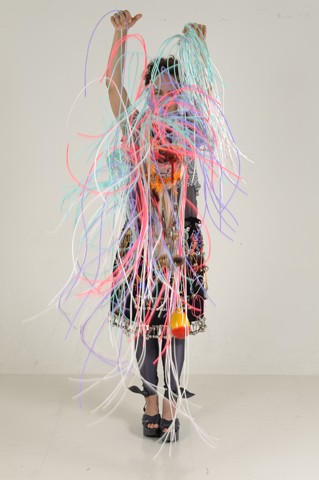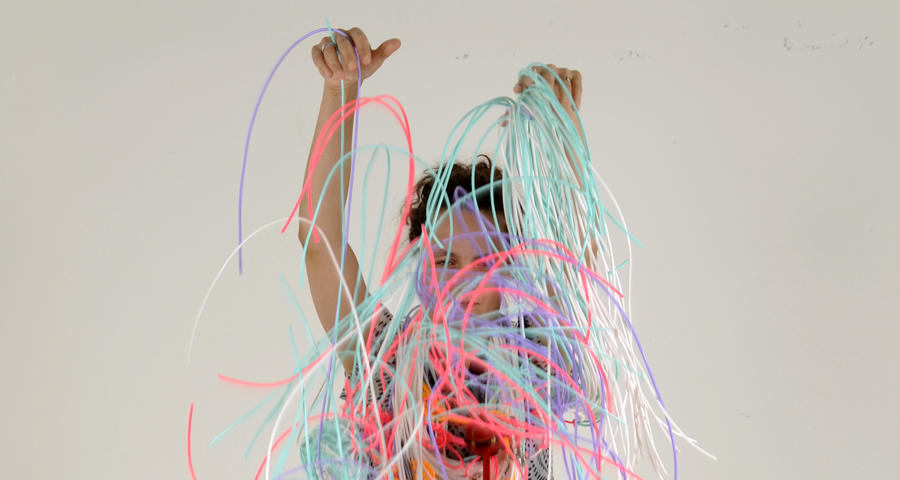


"







This performance was the opening work for Blurr 7, the international biennale for performance art held in November 2009 at the Center for Contemporary Art in Tel Aviv. Berning began the performance wearing a dress lined with bells which was designed especially for the event, and then walking among the audience ringing a large bell. As she did so, she followed the chimes with a soft changeable hum and created a delicate symbiotic interweaving between the chimes and her voice. Moving through the audience with a trail of sound behind her, Berning’s effect was meditative and soft.
The quodlibet - a term for a humorous composition that harmonically weaves together two or more independent, familiar melodies - involved ping pong balls, light bulbs, marbles and other objects bought at the local market. Among its many sources of inspiration, Berning counts the Electronic Dress made of light bulbs by Japanese artist Tanaka Atsuko in 1956 and worn by her on various occasions, as well as Jeff Wall’s After the Invisible Man by Ralph Ellison, 2000. This acclaimed, large-scale photograph features a low ceiling packed with hundreds of lights. Berning’s text referring to the latter, which she read at the end of her performance, says: “If I could shake that light-bulb room, it might just sound like heaven. It might just rain with an everlasting song…” The work searches for the sound that would resonate with and give a living voice to these iconic, but silent, art-world creations; it is particularly interested in the possibly theological task of translating light.